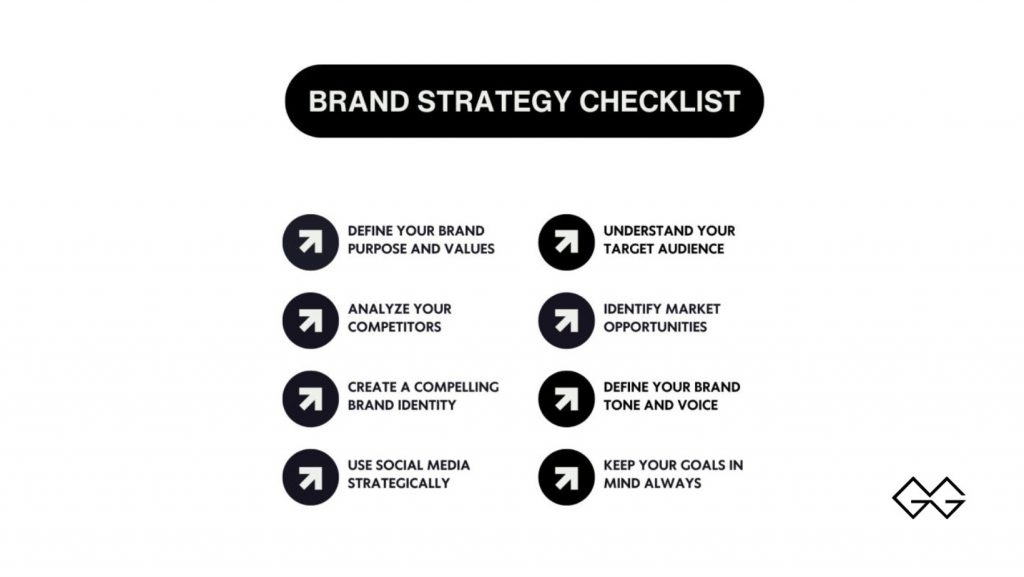Crafting a successful brand requires a clear strategy. Here’s a quick checklist to ensure your brand stands out and resonates with your audience:
1. Define Your Brand Purpose and Values
Understand the “why” behind your brand. What do you stand for, and what values drive your business? This forms the foundation of your brand and guides all decisions.
Example: A sustainable fashion brand may define its purpose as promoting eco-friendly practices in the industry, with values centered around ethical sourcing and environmental responsibility.
2. Analyze Your Competitors
Study your competitors to understand what they’re doing well and where there’s room for improvement. This helps you identify gaps in the market and opportunities for differentiation.
Example: If most competitors offer fast fashion, your brand could focus on creating high-quality, timeless pieces that appeal to conscious consumers.
3. Create a Compelling Brand Identity
Develop a unique brand identity that reflects your purpose and values. This includes your logo, colors, fonts, and overall aesthetic that should consistently represent your brand across all platforms.
Example: A tech startup might use sleek, modern design elements and a monochromatic color scheme to convey innovation and simplicity.
4. Use Social Media Strategically
Social media is a powerful tool for building your brand. Choose platforms that align with your target audience and create content that engages, informs, and entertains.
Example: A beauty brand targeting millennials might focus on Instagram and TikTok, creating tutorials, behind-the-scenes content, and influencer partnerships.
5. Understand Your Target Audience
Know who your audience is, what they need, and what motivates them. This knowledge is key to creating relevant messaging and offerings that resonate with them.
Example: A wellness brand might target busy professionals by offering stress-relief products and creating content around work-life balance.
6. Identify Market Opportunities
Keep an eye on market trends and look for opportunities to position your brand effectively. This helps in staying relevant and capitalizing on new market demands.
Example: During the rise of remote work, a furniture brand might introduce ergonomic home office setups tailored to this new lifestyle.
7. Define Your Brand Tone and Voice
Your brand’s tone and voice should be consistent and reflect your brand’s personality. Whether it’s formal, friendly, or quirky, make sure it aligns with your brand identity and resonates with your audience.
Example: A luxury brand might adopt a sophisticated and elegant tone, while a children’s toy brand might use a playful and upbeat voice.
8. Keep Your Goals in Mind Always
Set clear, measurable goals for your brand strategy and regularly check your progress. Staying focused on your goals helps ensure all your efforts are aligned and moving in the right direction.
Example: A fitness brand might set a goal to increase its social media following by 20% in six months through targeted campaigns and engaging content.

Final Words
Building a strong brand takes time, but with a solid strategy, you’ll create a lasting impact. Start with these essentials and watch your brand grow.

